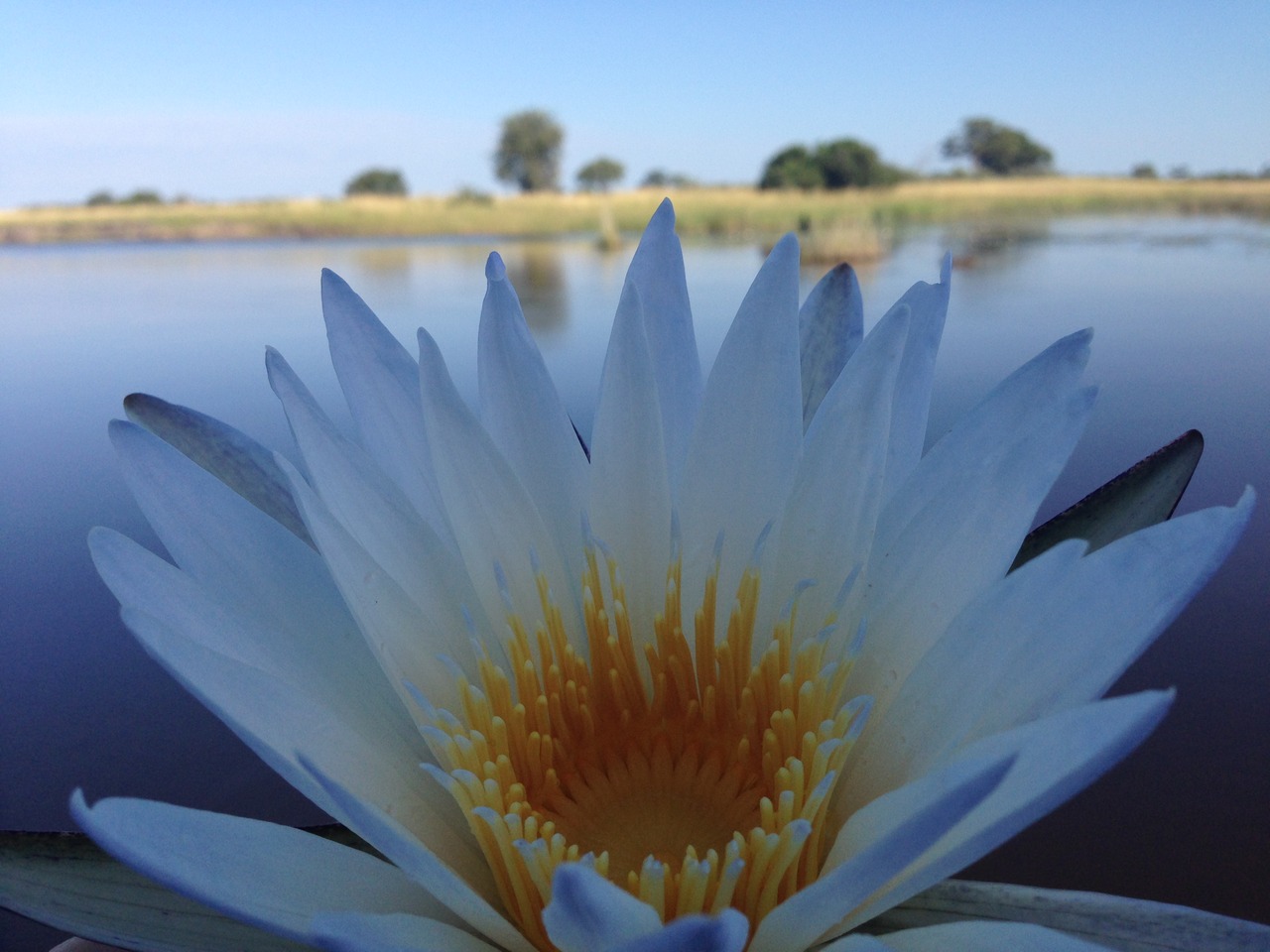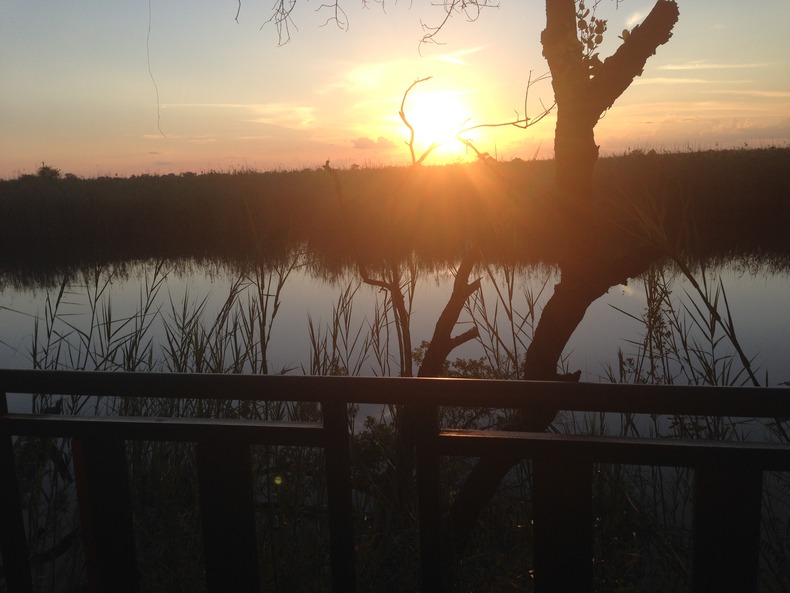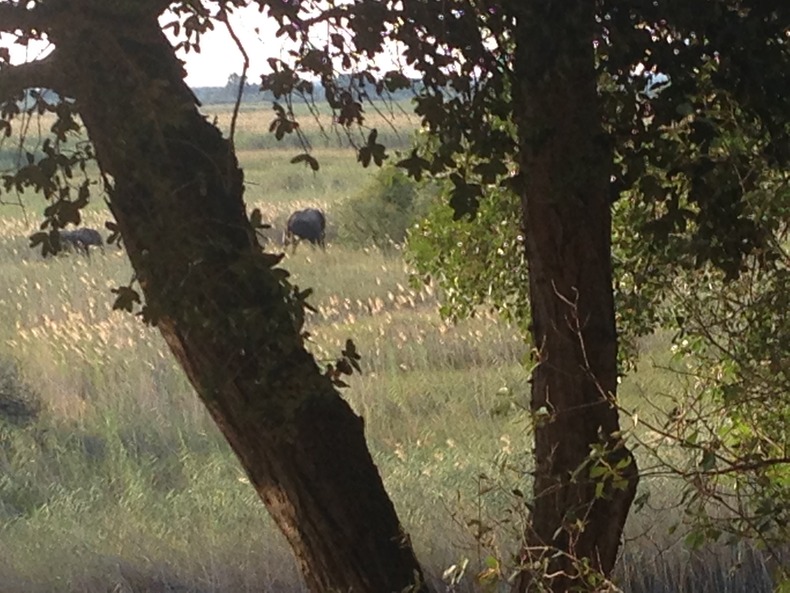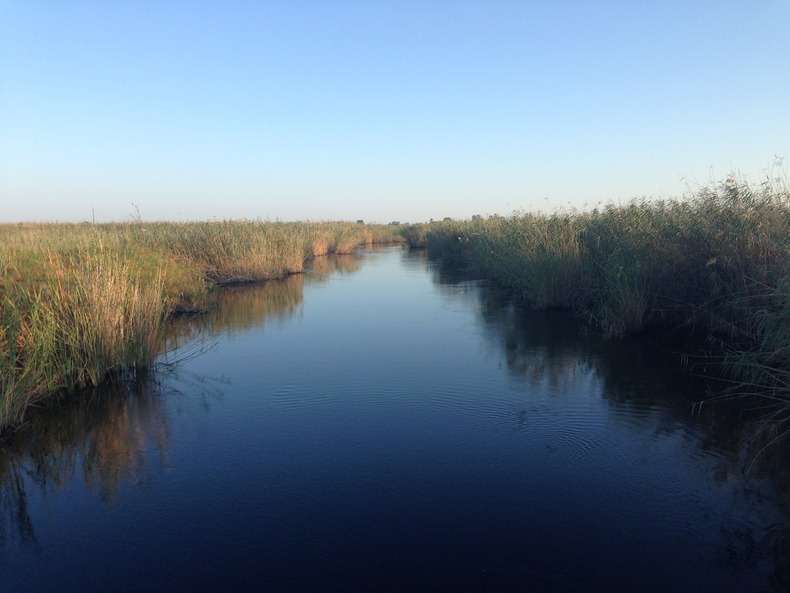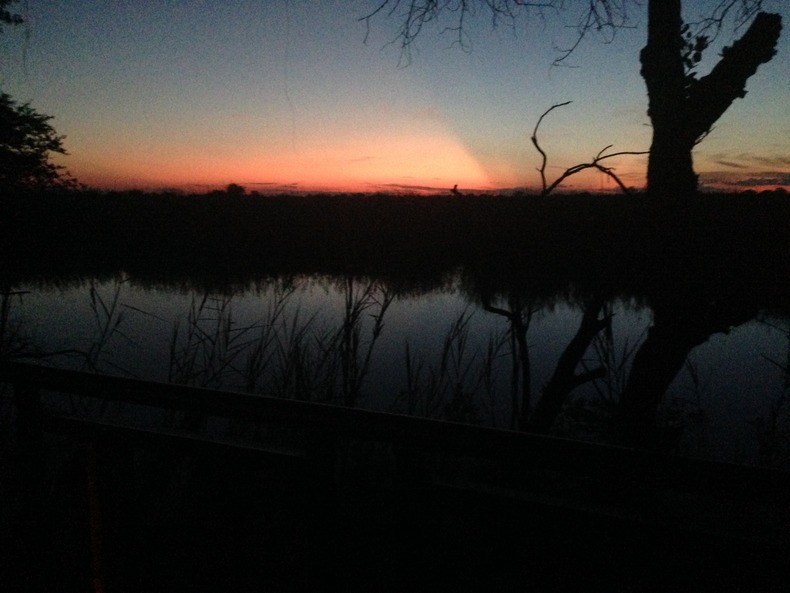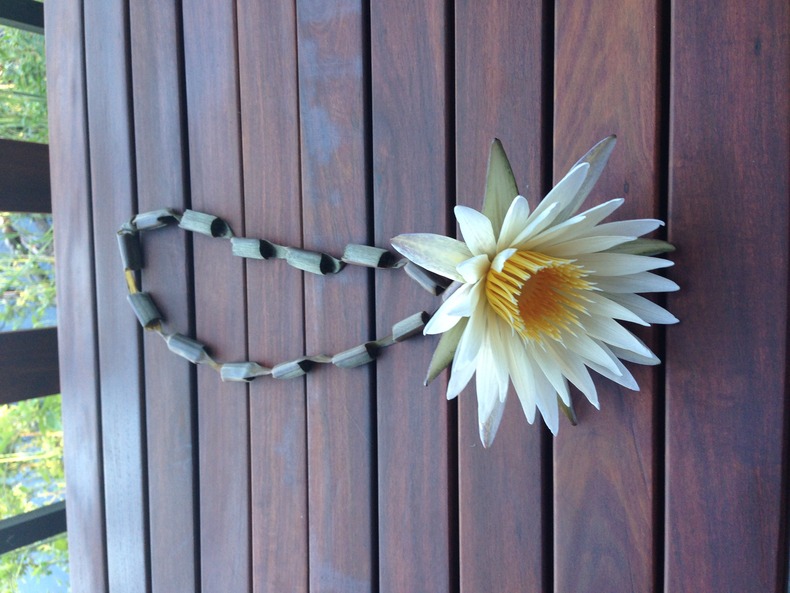The Zambezi Region, Kongola
Namushasha, on the Kwando River. As Andrew points out, photos never show that the sun at sunset is red, not yellow or white.
The Zambezi Region of Namibia is the strip that juts out in the northeastern corner of the country. Until 2013, the region was called the Caprivi Region, a namesake of von Caprivi who negotiated with the British, swapping Zanzibar in East Africa for the strip. The purpose of the trade was to give the Germans access to the Zambezi river. He also sought a river route to East Africa, though this was futile as the river is un-navigable around Victoria Falls. The Zambezi Region borders Angola, Botswana and Zambia. It is also in close proximity to Zimbabwe.
After leaving Etosha, we visited the Kongola area of the Zambezi region. This was our first time to the Zambezi region and was much anticipated since Andrew and I, with our law school classmates and professor Lara, traveled to Namibia for the first time in 2010 to participate in neutral trial observation for the trial concerning the 1999 Caprivi uprising. Lara arranged quite a fascinating human rights program for us. (Thanks Lara!)
The Zambezi Region has significantly more water, flora and fauna than most other parts of Namibia. It looks more similar to Zambia and Zimbabwe than most of Namibia. Namushasha where we stayed is situated directly on the Kwando river. The reeds are so tall that elephants hide behind them!
Those gray blobs are elephants! Despite their size, you cannot see them unless they move.
The Kwando River
Namashasha right after sunset
The Zambezi Region is believed by many to have more autonomy than other regions. This is in part due to it's isolation and great distance from Windhoek. In the Zambezi Region, traditional law is quite strong which is why I chose Katima-Mulilo, the capital of the region, as one of my field sites (to be discussed later). The region is also known for the Caprivi uprising which occurred in 1999 and the subsequent Caprivi treason trial.
The Caprivi Uprising and the Caprivi Treason Trial
To summarize briefly, in 1999 a group called the Caprivi Liberation Army sought succession by launching attacks in Katima on an army base and several other locations. At least eleven persons were killed in the struggle. There are several reasons cited as the motivating factors for the attacks, succession attempt and alleged conspiracy. It seems the region was largely neglected by the central government and was also the poorest region in Namibia. When I asked locals about this topic, some say that the succession movement was nothing more than an attempt by a few individuals to gain political power for themselves. Regardless of the reasons behind the uprising, 132 persons were indicted for high treason, murder and a variety of related crimes.
In 2010 when we were in Namibia with UM Law, the trial was ongoing and there was delay after delay in the proceedings. Between 1999 and 2010, some defendants were released or acquitted and several died in prison. I am not sure whether there were investigations into their deaths. There were many human rights issues with the trial itself and the treatment of the prisoners. There were quite a few allegations of torture and ill-treatment including beatings, mysterious injuries, and inadequate access to food, water and medical treatment. Many of the defendants could not afford attorneys and were not given legal aid until 2002, despite having been arrested in 1999.
As Amnesty International stated, justice delayed is justice denied. When we were in Windhoek for the express purpose of neutral trial observation in 2010, it had been eleven years since the arrest of the Caprivi Defendants. This is a ridiculous, entirely unreasonable length of time for a trial and a serious human rights violation. After there was an additional stay in June 2010, instead of neutral trial observation we focused to other projects. This is but one example of the many delays in the proceedings of this lengthy trial.
The verdict is still not final! As of December 2014 there were 65 remaining defendants and the trial was finally drawing to a close after more than fifteen years!! While news sources reported that the verdict should have been delivered in April 2015, this has not yet occurred. On a positive note, I have heard that the remaining defendants, if convicted, will receive time served for their many years of imprisonment before and during trial.
Aino and I received necklaces made out of waterlilies while at Namushasha
Living in the world. Humanitarian. Advocate for health, human rights and equality. Documenting experiences and observations.
